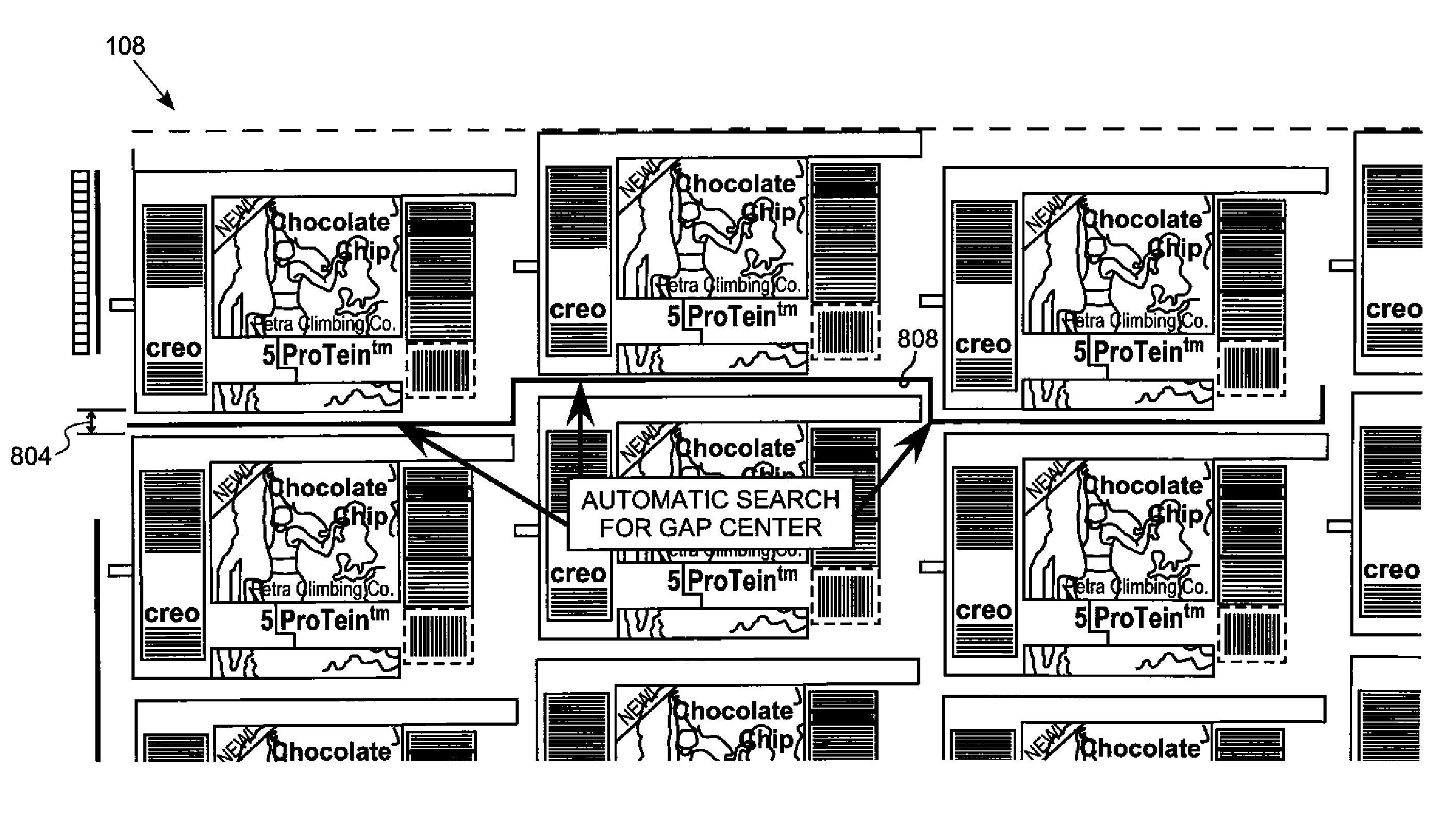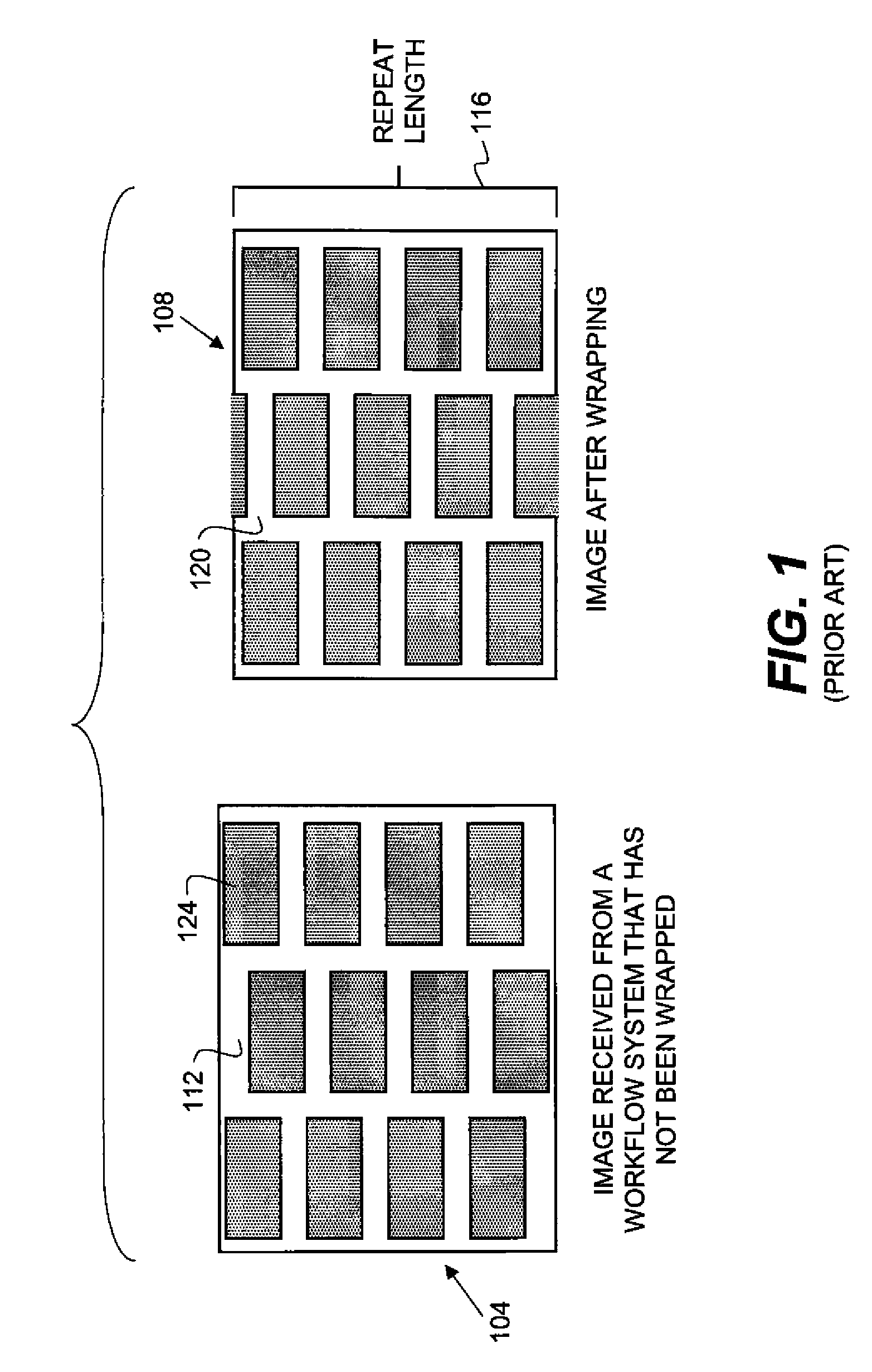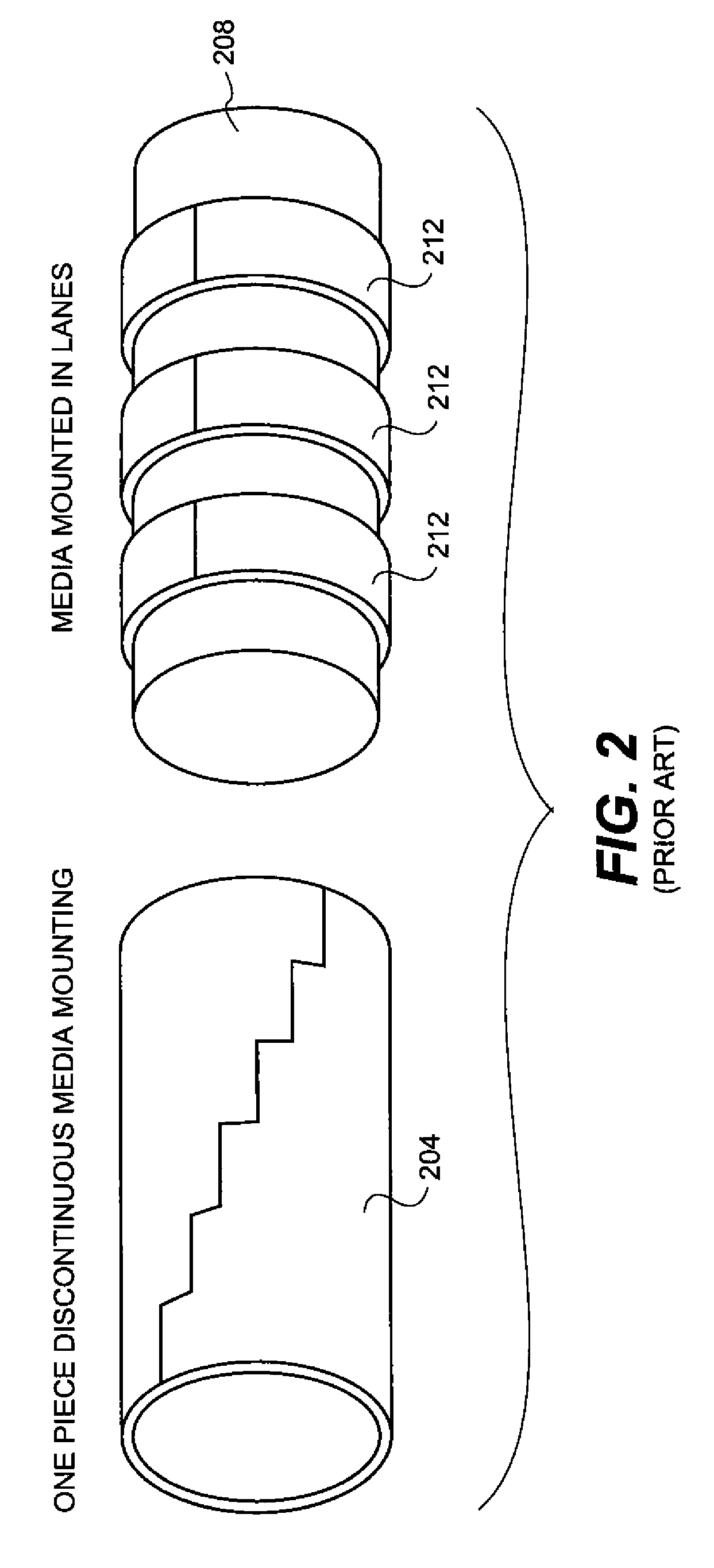Optimizing a seam for a print job
a printing job and seam technology, applied in the field of flexography printing, can solve the problem of relatively high cost of flexographic printing plates, and achieve the effect of reducing the number of plates
- Summary
- Abstract
- Description
- Claims
- Application Information
AI Technical Summary
Benefits of technology
Problems solved by technology
Method used
Image
Examples
Embodiment Construction
[0039]The present invention describes methods of selecting scenarios for reducing flexographic plate waste. This invention helps reduce material waste in the process of flexographic plate production.
[0040]The present invention is adapted to improve deficiencies in the current workflow process. More specifically it suggests an automatic method to create an optimal cut line for the flexographic plate. In one embodiment of the invention the optimal cut line is created automatically, taking into consideration the data content of the various job separations. The cut line design may take into consideration the step and repeat element structure, thus saving cut line calculation processes. Creation of similar cut lines across different separations is preferable. One of the parameters which are considered during a cut line creation is to design similar cut lines across different separations of a printing job. The parameter is also taken into consideration as well during cut line creation.
[00...
PUM
 Login to View More
Login to View More Abstract
Description
Claims
Application Information
 Login to View More
Login to View More - R&D
- Intellectual Property
- Life Sciences
- Materials
- Tech Scout
- Unparalleled Data Quality
- Higher Quality Content
- 60% Fewer Hallucinations
Browse by: Latest US Patents, China's latest patents, Technical Efficacy Thesaurus, Application Domain, Technology Topic, Popular Technical Reports.
© 2025 PatSnap. All rights reserved.Legal|Privacy policy|Modern Slavery Act Transparency Statement|Sitemap|About US| Contact US: help@patsnap.com



